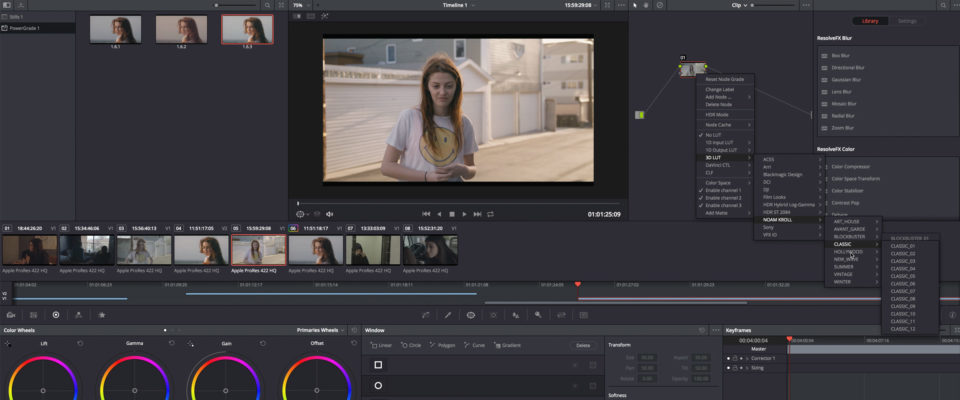

Color grading and color correction: what’s the difference?Īs we’ve outlined above, color grading with LUTs is a process that transforms preset input color values into other output values. Camera makers such as Sony, Canon, Panasonic, DJI and GoPro provide 3D LUTs for color-grading footage. When filmmakers don’t shoot in a standard color space but a device-specific one, the color grading lookup table needs to be specific to their log footage in the input section of the LUT.

During color grading, the colorist, therefore, has greater artistic control to achieve the desired look. The S-Log format by Sony, for example, is a gamma curve with a wide dynamic range and color gamut greater than the Rec709 color space. Modern digital camera technology uses sensors that capture more information than standardized color spaces can contain. Identical or compatible color spaces enable accurate color reproduction across devices, but transforming from a larger to a smaller color space will always lose detail, which then becomes visible in highlights, shadows, or saturation, resulting in “flat” colors. Regarding devices and digital files, their color space helps us understand the range of colors they can record, or reproduce. For example, in the RGB color space, each individual color is represented by a value for red, green, and blue.

The term color space describes a way of organizing colors. When the camera crew reviews footage on set, they process it with a viewing LUT from a log color space to a standard color space such as Rec709 so its appearance on a viewing monitor will be closer to the post-editing footage. These low-contrast images with muted colors result from a log footage color space, such as S-Log or Log C. Viewing: Camera footage can appear flat, depending on the device. A preset solution like this saves you a lot of time in post-production: instead of having to do the changes manually, the Lookup table processes the colors for you. The LUT you would apply to your project would plug in all the color values of your footage and subdue them, but enhance the values for all defined shades of red. Let’s say that whenever the specific color red appears in your film, you want it to be bright and stand out, and all the other colors should appear faded and muted in comparison. In layman’s terms, think of a LUT as a preset you can apply to alter the color palette and give your film a specific look, from emulating old footage or a certain show to a cinematic look. Lookup tables are a way to speed up the process of color-grading footage. In this guide to color grading, we’ll go into the details of color grading with LUTs and talk about how filmmakers use LUTs with examples, a workflow overview, and resources for your film projects. Color grading can stylize the color scheme to achieve the desired effect or look, or move from one color space to another. In filmmaking, it is part of post-production and a filmmaker or colorist will color grade a film with a lookup table, or LUT for short. Color grading is a process of treating footage for technical or artistic reasons.


 0 kommentar(er)
0 kommentar(er)
